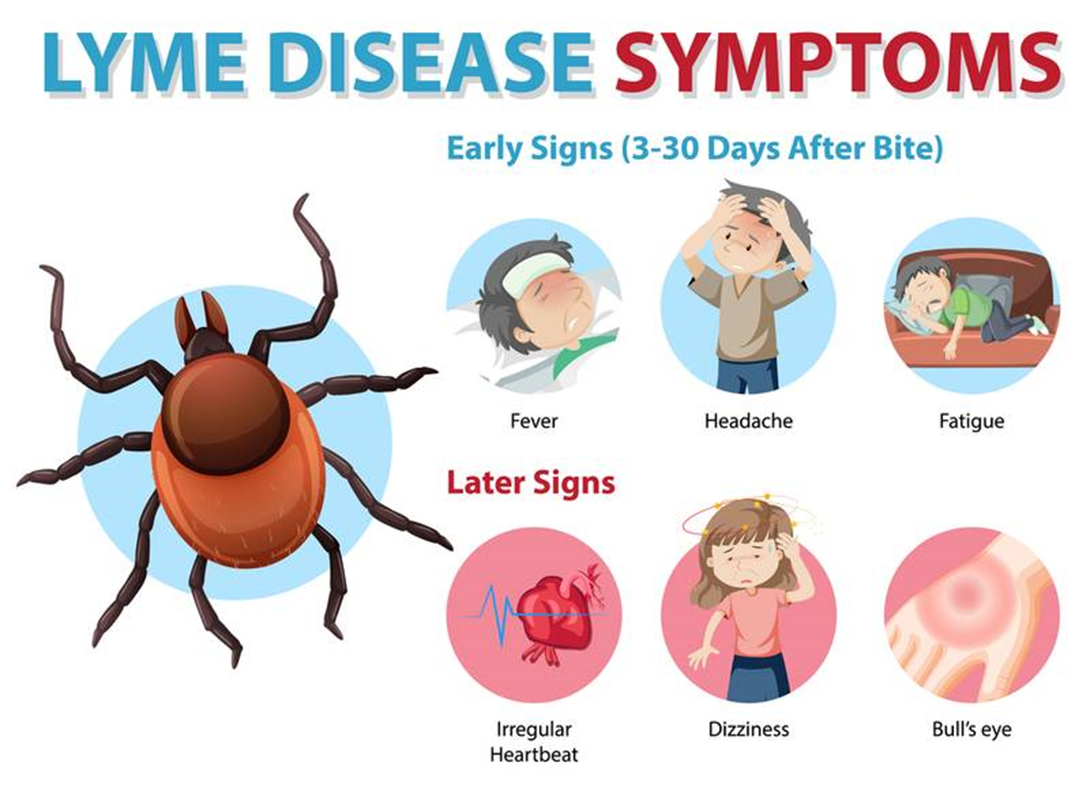A nurse working in an infectious disease clinic is caring for a client who has a new diagnosis of Lyme disease. Which of the following agencies is responsible for voluntarily reporting cases of this disease to the Centers for Disease Control and Prevention (CDC)?
Office of the Surgeon General.
State health department.
Hospital infection control department.
Local Red Cross chapter.
The Correct Answer is B
Choice A reason: The Office of the Surgeon General is not responsible for voluntarily reporting cases of Lyme disease to the CDC. The Office of the Surgeon General provides leadership and direction to the U.S. Public Health Service and oversees the operations of the U.S. Public Health Service Commissioned Corps.
Choice B reason: The state health department is responsible for voluntarily reporting cases of Lyme disease to the CDC. The state health department collects and analyzes data on reportable diseases, such as Lyme disease, and submits them to the CDC through the National Notifiable Diseases Surveillance System (NNDSS).

Choice C reason: The hospital infection control department is not responsible for voluntarily reporting cases of Lyme disease to the CDC. The hospital infection control department monitors and prevents nosocomial infections, or infections acquired in the hospital setting, and implements infection control policies and procedures.
Choice D reason: The local Red Cross chapter is not responsible for voluntarily reporting cases of Lyme disease to the CDC. The local Red Cross chapter provides humanitarian services, such as disaster relief, blood donation, health and safety education, and emergency communication.
Nursing Test Bank
Naxlex Comprehensive Predictor Exams
Related Questions
Correct Answer is B
Explanation
Choice A reason: Presenting community education programs about stress management is not an example of tertiary prevention, but rather an example of primary prevention. Primary prevention aims to prevent violence from occurring in the first place by addressing the underlying causes and risk factors. Stress management is one of the strategies that can help reduce the potential for violent behavior.
Choice B reason: Developing resources for victims of abuse is an example of tertiary prevention. Tertiary prevention aims to reduce the consequences and complications of violence by providing treatment and rehabilitation for the survivors. Resources for victims of abuse may include counseling, shelter, legal aid, and support groups.
Choice C reason: Urging community leaders to make nonviolence a priority is not an example of tertiary prevention, but rather an example of secondary prevention. Secondary prevention aims to detect and intervene in violence as early as possible by identifying and responding to the warning signs and symptoms. Community leaders can play a role in promoting a culture of nonviolence and enforcing policies and laws that protect the victims and punish the perpetrators.
Choice D reason: Assessing for risk factors of intimate partner abuse during health examinations is not an example of tertiary prevention, but rather an example of secondary prevention. Secondary prevention aims to detect and intervene in violence as early as possible by identifying and responding to the warning signs and symptoms. Health examinations can provide an opportunity for screening and counseling the clients who may be at risk of or experiencing intimate partner abuse.
Correct Answer is D
Explanation
Choice A reason: Touching the hair of an African American client during an assessment does not demonstrate accurate cultural knowledge, as it may be considered disrespectful or intrusive. Hair is a sensitive and personal topic for many African Americans, who may have experienced discrimination or stigma based on their hair texture or style¹. The nurse should ask for permission before touching the client's hair and explain the purpose of the assessment.
Choice B reason: Offering to shake hands when meeting an Asian client of the opposite gender does not demonstrate accurate cultural knowledge, as it may be considered inappropriate or offensive. In some Asian cultures, physical contact between men and women who are not related or married is discouraged or prohibited². The nurse should observe the client's body language and follow the client's lead in greeting gestures.
Choice C reason: Maintaining eye contact when interviewing a Native American client does not demonstrate accurate cultural knowledge, as it may be considered rude or aggressive. In some Native American cultures, eye contact is a sign of disrespect or challenge, especially when talking to elders or authority figures³. The nurse should avoid direct eye contact and use a respectful tone of voice when interviewing the client.
Choice D reason: Including both hot and cold food items on a Hispanic client's menu demonstrates accurate cultural knowledge, as it reflects the concept of balance and harmony in Hispanic culture. Many Hispanics believe that health and illness are influenced by the balance between hot and cold forces in the body and the environment⁴. The nurse should respect the client's food preferences and beliefs and provide a variety of food options.
Whether you are a student looking to ace your exams or a practicing nurse seeking to enhance your expertise , our nursing education contents will empower you with the confidence and competence to make a difference in the lives of patients and become a respected leader in the healthcare field.
Visit Naxlex, invest in your future and unlock endless possibilities with our unparalleled nursing education contents today
Report Wrong Answer on the Current Question
Do you disagree with the answer? If yes, what is your expected answer? Explain.
Kindly be descriptive with the issue you are facing.
